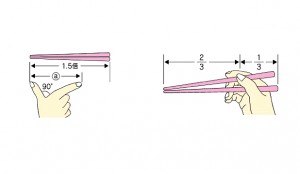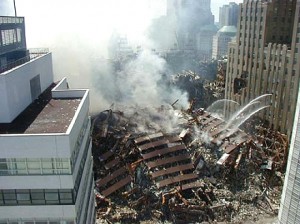2009-02-25: Back in 2003 … remember the European Year of People with Disabilities ? … or maybe you don’t, as there is a European Year for everything now ! … I belonged to a small group of people – the European Union Expert Group on Accessibility. The Report issued at the end of our term included the usual statistic of 10% of people in Europe having a disability. That figure, which always seemed a bit out of date and wide of the mark to me, continues to re-appear here, there and everywhere. It is not reliable. But … please read on.
As far as bureaucrats are concerned … if there are no statistics, a problem does not exist … and if there is no problem, there is no need to spend money.
But, that approach leaves policy makers who take their responsibilities seriously, NGO’s, people who design buildings and teachers, for example, in a vacuum. No wonder awareness among the General Public is so low, and that there are so many participation restrictions and barriers in our Built Environment.
Questions relating to ‘disability’ in Irish Census Forms merely scratch the surface of this issue.
A recent Report, issued by the United States Census Bureau on 18th December 2008, may provide some useful information to guide front line policy and design implementation in Europe. Please handle with caution, as these are NOT European statistics.
About one in five residents of the USA – 19% – reported some level of disability in 2005, according to the Report. These 54.4 million people are roughly equal to the combined total populations of California and Florida.
Both the number and percentage of people with disabilities were higher than in 2002, the last time the Census Bureau collected such information. At that time, 51.2 million, or 18%, reported a disability.
Among those with a disability, 35 million, or 12% of the population, were classified as having a severe disability.
Nearly half (46%) of people aged 21 to 64 with a disability were employed, compared with 84% of people in this age group without a disability. Among those with disabilities, 31% with severe disabilities and 75% with non-severe disabilities were employed. People with difficulty hearing were more likely to be employed than those with difficulty seeing (59% compared with 41%).
A portion of people with disabilities – 11 million aged 6 and older – needed personal assistance with everyday activities. These activities included such tasks as getting around inside the home, taking a bath or shower, preparing meals and performing light housework.
Other Important U.S. Findings:
– Among people 15 years of age and older, 7.8 million (3%) had difficulty hearing a normal conversation, including 1 million being unable to hear at all. Although not part of the definition of disability used in the Report, 4.3 million people reported using a hearing aid.
– Roughly 3.3 million people, or 1%, aged 15 and older used a wheelchair or similar device, with 10.2 million, or 4%, using a cane, crutches or walker.
– Nearly 7.8 million people aged 15 and older had difficulty seeing words or letters in ordinary newspaper print, including 1.8 million being completely unable to see.
– More than 16 million people had difficulty with cognitive, mental or emotional functioning. This included 8.4 million with one or more problems that interfered with daily activities, such as frequently being depressed or anxious, trouble getting along with others, trouble concentrating and trouble coping with stress.
– The chances of having a disability increase with age: 18.1 million people 65 years of age and older, or 52%, had a disability. Of this number, 12.9 million, or 37%, had a severe disability. For people 80 years of age and older, the disability rate was 71%, with 56% having a severe disability.
– Among people 16 to 64 years of age, 13.3 million, or 7%, reported difficulty finding a job or remaining employed because of a health-related condition.
– Among people 25 to 64 years of age with a severe disability, 27% were in poverty, compared with 12% for people with a non-severe disability and 9% for those without a disability.
– Median monthly earnings were $1,458 for people with a severe disability, $2,250 for people with a non-severe disability and $2,539 for those with no disability.
– Parents reported that 228,000 children under age 3, or 2%, had a disability. Specifically, they either had a developmental delay or difficulty moving their arms or legs. In addition, there were 475,000 children 3 to 5 years of age, or 4%, with a disability, which meant they had either a developmental delay or difficulty walking, running or playing.
– There were 4.7 million children 6 to 14 years of age, or 13%, with a disability. The most prevalent type was difficulty doing regular schoolwork (2.5 million, or 7 percent).
A Practical and Reasonable Application, therefore, of the above information in International & European Fire Engineering Practice is as follows:
Equivalent to the concept of ‘maximum credible fire scenario’, which was introduced by the Recommendations contained in the 2005 NIST Report on the WTC 9-11 Incident … the Fire Engineer (or other suitably qualified and experienced person) should develop his/her ‘real’ fire engineering strategy on the basis of a ‘maximum credible user scenario’, i.e. building user conditions which are also severe, but reasonable to anticipate …
– the number of people using a building may increase, on occasions which cannot be specified, to 120% of calculated maximum building capacity ; and
– 10% of people using the building (occupants, visitors and other users) may have an impairment (visual or hearing, physical function, mental, cognitive or psychological, with some impairments not being identifiable, e.g. in the case of anosognosia).
If more than token consideration is to be given to Fire Evacuation for All … these guidelines indicate, for example, how much space should be allocated to an ‘area of rescue assistance’ which adjoins – on every floor except ground level – a vertical fire evacuation staircase in a building.
Fire Evacuation Routes at ground level should be ‘accessible’ and lead directly to the exterior.
.
.
END











